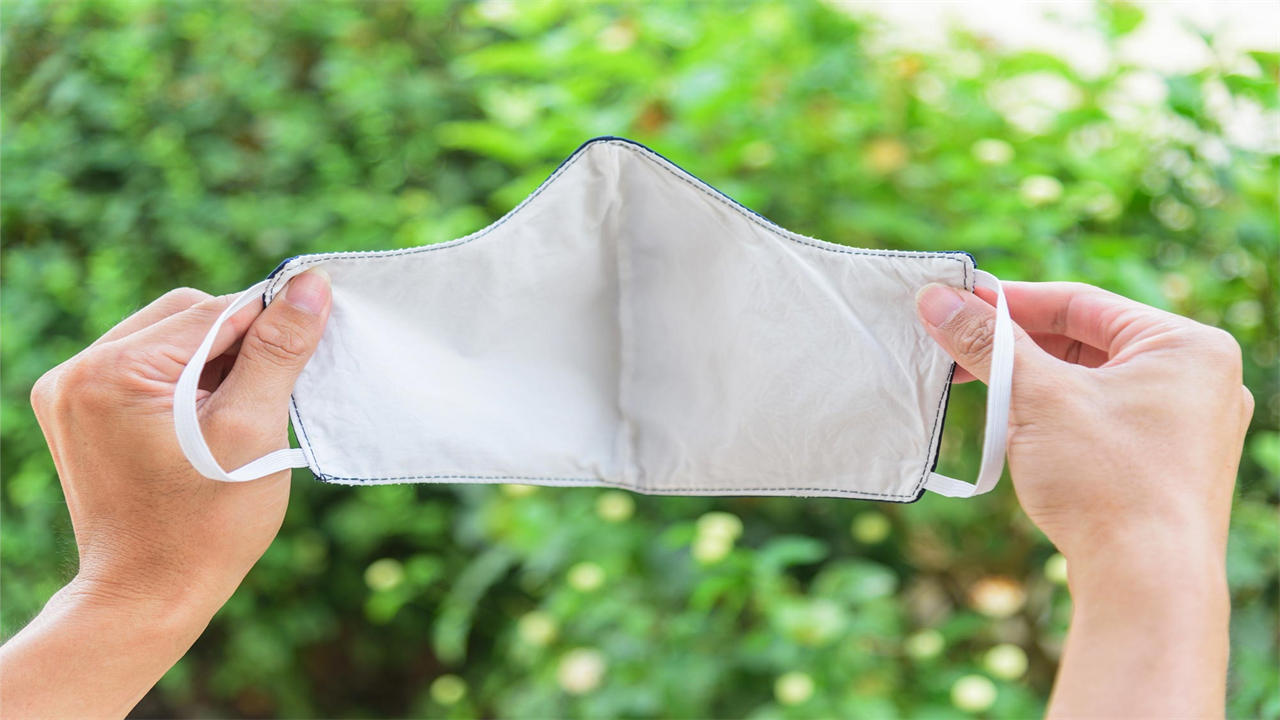Reusable Cloth Masks Hold Up After a Year of Washing, Drying
0 View
Share this Video
- Publish Date:
- 21 November, 2021
- Category:
- Covid
- Video License
- Standard License
- Imported From:
- Youtube
Tags

Don’t throw away that cloth mask just yet — it still works.
New study also confirms that applying a cotton mask to a surgical mask — which fits snugly on the face — provides more protection than just a cloth.
The reusable cloth masks people have been using for the past year or more may look a little worse for wear. But new research from the University of Colorado Boulder shows that washing and drying doesn’t reduce their ability to filter out viral particles.
“It’s good news for sustainability,” said lead author Marina Vance, assistant professor in Paul M. Rady’s Department of Mechanical Engineering. ‘That cotton mask you washed, dried and reused? It’s probably still fine – don’t throw it away.”
The study, published in the journal Aerosol and Air Quality Research, also confirms previous research that applying a cotton mask to a surgical mask — which fits snugly on the face — provides more protection than just a cloth.
Science for sustainability
An estimated 7,200 tons of medical waste has been generated every day since the start of the pandemic, much of it disposable masks.
“We were really bothered at the start of the pandemic, when we were taking a walk or going downtown and seeing all these disposable masks laying around in the environment,” said Vance, who is also on the faculty in the environmental engineering program.
Disposable masks have become a major litter problem, ending up on streets and in wastewater systems where they can travel to the ocean.
So she was eager to join forces when scientists at the nearby National Renewable Energy Laboratory (NREL) approached her to investigate how washing and drying affects reusable cloth masks.
Their process was pretty simple: make double-layer squares of cotton, wash and dry them repeatedly (up to 52 times, the equivalent of a weekly wash for a year), and test them between about every 7 cleaning cycles.
Although the masks were not tested with real people — instead they were mounted on one end of a steel funnel that allowed researchers to control a consistent flow of air and particles in the air — the researchers tested the masks with realistic to lifelike conditions, with high humidity and temperatures to mimic the impact of our breathing on the mask.
While the cotton fibers began to break down over time after repeated washing and drying, the researchers found that this did not significantly affect the cloth’s filtration efficiency.
The only noticeable change was a slight increase in inhalation resistance, which can make the mask feel a little harder to breathe after some wear.
Mask fit is critical
One major caveat is that they ran the tests with a “perfect fit” in the lab.
“We assume there are no gaps between the mask material and the person’s face,” Vance said.
The shape of each person’s face varies considerably. So depending on the shape of a mask and how well the person fits it, it may or may not fit properly. Previous research has shown that an ill-fitting mask can transmit as much as 50% of the airborne particles we inhale and exhale, as well as the virus.
Learn tips and tricks for testing and adjusting your mask here.
So which mask should you wear?
This study is not the first to show that cloth masks offer less protection than surgical masks or a layered combination of surgical and cloth masks.
By measuring how well the mask filtered the inhaled air — protecting the person wearing the mask and not reducing transmission from the source — this study found that the cotton cloth masks contained up to 23% of the smallest particle size (0.3 microns). ) on which the virus can travel. Bandanas filtered even less, at only 9%.
Several samples used in this study are listed from top right to bottom clockwise: N95 respirator, KN95 respirator, surgical mask, wash/dry sample coupon, 2-ply bandana, and cloth mask. Credit: Marina Vance
In comparison, surgical masks filtered out between 42-88% of the small particles, and cotton masks on top of surgical masks achieved a filtration efficiency of nearly 40%. Unsurprisingly, KN95 and N95 masks performed the best, filtering out 83-99% of these particles.
But while this study found that cloth masks alone offer less protection against the virus than a layered approach or disposable masks, such as surgical masks, KN95s and N95s, it remains important information for those who rely on fabric for its comfort, affordability and reusability. said Vance.
“I think maybe the best mask is the one you’re actually going to wear,” Vance said. “And that will fit snugly against your face without being too uncomfortable.”
Reference: “Filtration performance of layered masks and face coverings and the reusability of cotton masks after repeated washing and drying” by Sumit Sankhyan, Karen N. Heinselman, Peter N. Ciesielski, Teresa Barnes, Michael E. Himmel, Hannah Teed, Sameer Patel, and Marina E. Vance, Aug. 30, 2021, Aerosol and Air Quality Research.
DOI: 10.4209 / aaqr.210117
Other authors of this publication are: Sumit Sankhyan, Sameer Patel and Hannah Teed of the University of Colorado Boulder; Karen N. Heinselman, Peter N. Ciesielski Teresa Barnes, and Michael E. Himmel of the National Renewable Energy Laboratory’s Renewable Resources and Enabling Sciences Center.










